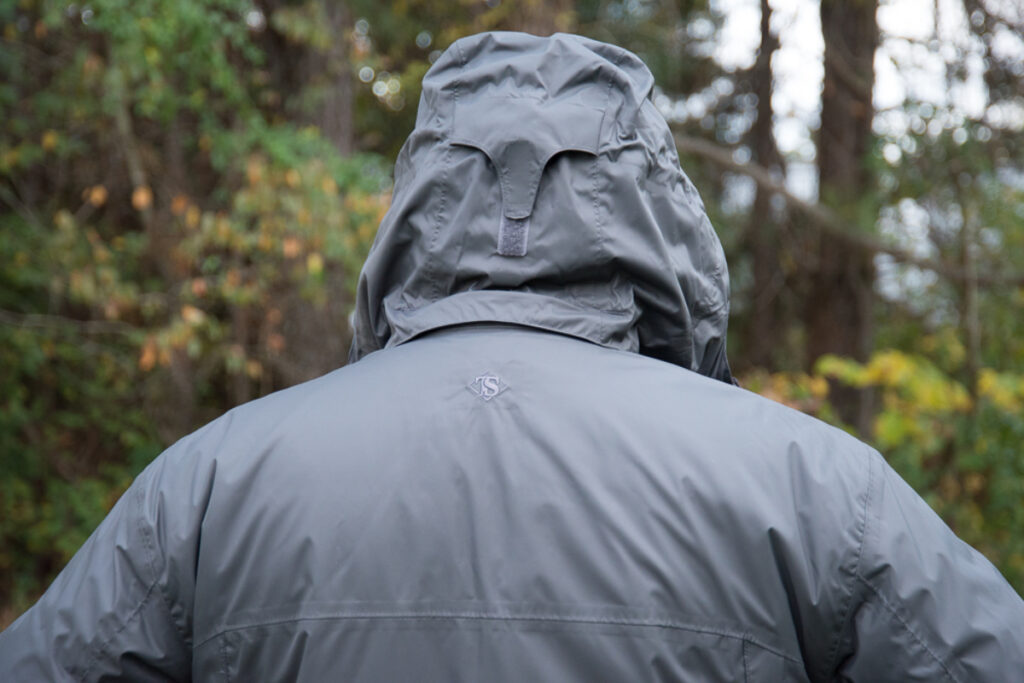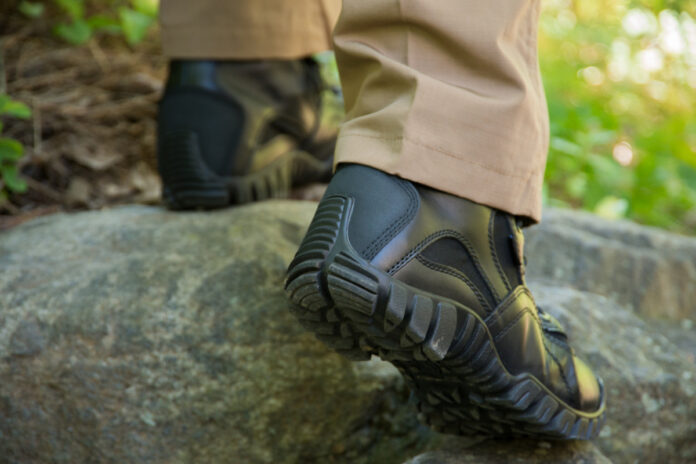The last time I went shopping, all I added to my prepper pantry were two cans of chicken noodle soup. Instead, I’ve been doing some stocking up on non-food items. I recommend you consider doing the same.
I took my own advice and now have two new-in-box pairs of boots in our storage room. This should give me at least three years of footwear if the SHTF, the cargo ships stop sailing, or the trucks stop rolling. If our only emergency is inflation, then I will have saved money by buying boots now.
The newest pair is a genuine USMC RAT boot that has a Vibram sole that can be replaced. Granted, in a post-SHTF scenario, there will probably not be a shoemaker around (heck, there’s not a shoemaker around now), but I have visions of cutting a sole out of an old tire and using my Speedy Stitcher to sew it on. I don’t know if that will be possible, but since it’s a theoretical situation that may never occur, I will not lose any sleep over it.
The second pair are work boots with a composite safety toe. These are six inches high while the combat boots are 8 inch-boots. Both offer ankle protection. Both have sole suitable for the rocky mountain terrain where we live.
My wife and I both own barn boots, which are great in the muck and mud. These are valuable in the garden, chicken coop, and around the homestead. They are ideal when I have to work near or in a stream. By wearing these boots, which go almost up to my knee, with my army surplus poncho, they cover that space below the poncho hem where my pants get wet in a driving rain.
Why Boots
As I have mentioned previously, 98 percent of all shoes sold in the U.S. are imported. If there is an economic collapse, a war, or a global disaster, the U.S. will run out of new shoes pretty quickly.
I find boots are a better choice than shoes for my current lifestyle and for prepping. First, a good pair of boots will outlast casual shoes. Second, they do a much better job of protecting your feet and your ankles. (Even a boot without a safety toe boots offers better protection than most sneakers.) Third, you can get waterproof boots, insulated boots, safety toe boots, or any combination of the above.
Finally, you can’t use a shovel effectively with a pair of shoes that do not have a strong, solid sole. To properly dig, you need to apply your weight to the shove l through your feet; with cheap shoes that can hurt you and damage the shoe. Boots work great for digger and are also better for climbing ladders or scaling rocks.
I would caution preppers to avoid flip-flops, sandals, or other open-toed footwear that do little to protect your feet. Unless your retreat is on a beach or you will be on or in the water, stick with something that will protect you if you stub your toe or drop a log on your foot. A broken toe, or even a torn off toe nail, can limit your mobility and the amount of work you can do.
Beyond Boots
When I stashed my boots in our storage room, I tucked a pair of socks into each boot. Ever since I put together my first bugout bag, I’ve had extra sock in case of an emergency. I’ve got white crew sock, heavy thick wool socks, colorful wool blend socks, and military boot socks that reach to my knee. I should be set on socks.
Last year, I got a great buy on a parka. It’s one of those jackets with a zip-out liner. You can wear the liner as a light jacket, the outer shell by itself, or zip them together when it’s freezing. It’s still hanging in the closet and will be for some time. I expect coats and jackets will last longer than boots. I know I have some that are old but wear just fine. With multiple rain parkas, sweatshirts and even sweaters–which are not my favorite–I think I’ve got outerwear covered.

Because it is cold here on the mountain, I also have some thermals tucked away in our stash. Most are polyester, but one pair is wool. I expect these will be useful if I am ever sitting in our overwatch position on a cold day. I have spare hats and gloves tucked away, too.
Equipping Others
If we end up with some global calamity and my family and prepper friends make it here, I may have to give away some of my spare clothing. (Although I am going to resist giving away my boots!) Sharing things like socks and hats that are one size fits most is easy, but most other items need to be a particular size. With a tight belt or a pair of suspenders, you can wear pants that are too big, but it’s tough to wear a coat that’s too small.
I haven’t gone so far as to buy and stash clothing for other people who may one day be here, but it’s one of the first things on the list of suggested items to bring when bugging out. I’ve even recommended they bring multiple pairs of rugged shoes and outerwear. Even if it is warm when they bug out, the cold will come if they end up staying here for months.
I find I wear out at least one and sometimes two pairs of leather work gloves each year. Handling firewood is the biggest culprit, as it wears holes in the fingers. What do I do then? I cut off the fingers so I have fingerless gloves. These are still useful for working with gardening tools where the palm and lower joints of your fingers take the most wear. When I find a pair of gloves I like and that seem durable, I buy two or three pairs and tuck one away.
How to Stock Up For Less
One of the unexpected bonuses of being a prepper is that you can wait for sales. If I had only one pair of boots, I would have to rush out and buy a pair when they wear out. Because I have several pairs plus extras in storage, I can shop at my leisure, look for a bargain, take advantage of clearance sales, and visit an army navy surplus store.
For example, the best time to buy thermal underwear is in August, when it has just come in but no one needs it yet, or at the end of the season when retailers clear out remnants. Don’t wait until the first snowfall and get stuck paying full price; stock up at the pre-season sale or buy extras at the post-season clearance.
Check out thrift stores as well. The number of people who donate new or barely worn clothing because they don’t fit or they don’t like the style or color might surprise you.
Clothing as a Prep
When you focus on food, water, medical and self-defense, clothing doesn’t always appear on the prepper’s radar screen. Change that. Get durable, heard-wearing clothing and comfortable boots for the whole family. Make sure you have outwear suitable for all conditions and try to avoid bright colors. I’m not saying you need camouflage, but brown, beige and even black are better than pink, blue or red.
Given the supply chain shakeout and the rate of decay in our world, don’t want too long. Use Christmas as an excuse to get your family geared up.









Best to make sure that the soles of your boots are sewn on. I have found boots that I put back (purchased on sale) that when I took them from the box the soles just peeled off! These boots were stored in a climate controlled room and they still did this. One pair was from LL Bean and the other was from Sears.
Also best to treat leather uppers with something like Mink Oil before putting them away.
Good advice, thanks!
The combat boots are sewn on, but the others are not. I have found that non-sewn boot soles will last five years but delaminate by the seventh due to the adhesive failing. It may vary my manufacturer or material.
The adhesive failing on non-sewn boot soles is why I stock Loc-Tite shoe glue.
Comments are closed.